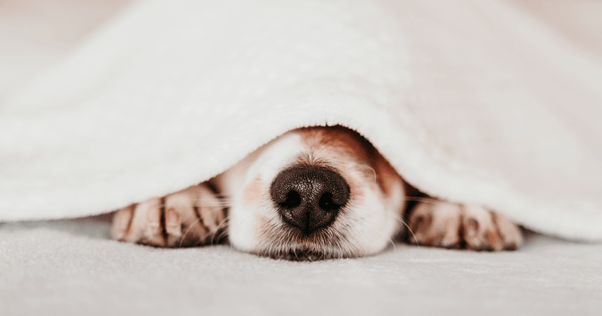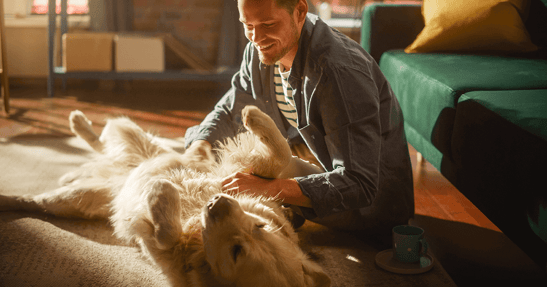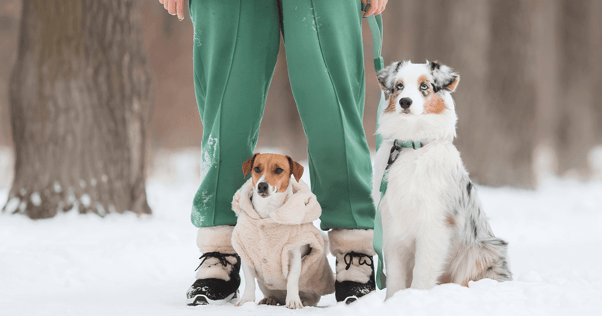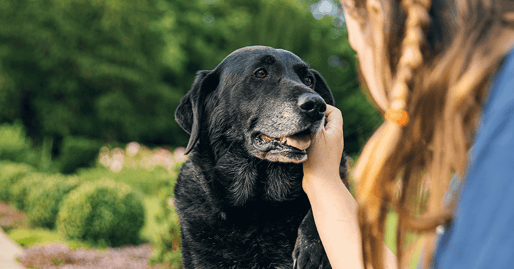Just like us humans, dog’s replicate many of the emotions or physical feelings we can get ourselves. The only difference is that determining what’s causing these is a little harder for us to understand. Especially when our methods of communicating with one another are completely foreign!
It can be easy to assume that your dog is shaking simply due to the fact we’re in the colder months. But with many different reasons why your dog could be shivering, it’s best to assess which is the most likely cause for the behaviour they’re displaying. Knowing the difference will mean you can work out the best way to support them.
So why do dog’s shiver? Let’s jump straight into the topic.
Because They Are Stressed

Dogs can shake or shiver if they are feeling upset in a situation. This is a response as their body gets ready to run away or jump into defence. Each of our pets are different and respond differently to the scenarios they face, so where loud noises such as fireworks can cause some to tremble, others may be more triggered and scared by travelling in a car for example. If your dog is shaking alongside displaying signs such as panting, whimpering, trying to hide or drooling, the best thing to do is to remove them from the situation.
It's also useful to take note of the situations where your dog is nervous or stressed, as this can help you manage it better in the future.
2. Due To Excitement

It’s easy to get overexcited, in particular for our dogs. The joy and emotions running high can sometimes be a little too much! As well as out of fear, some dogs can also shake when they are excited, or anticipating something is above to happen. This is often thought to be due to an outward manifestation of this intense emotion. We tend to see this reaction more so in younger pups with weaker impulse controls or toy breeds with a more excitable temperament.
The key indicator that your dog is shivering from excitement is that they should stop this once they have calmed down. Post-dog walk and once you’ve come back home, you’d also expect to see other signs such as tail wagging or barking settle down.
3. A Sign of Pain or Illness

If your dog is shaking and showing signs of muscle tremors, this could suggest an underlying medical condition. For example, distemper (ear problems), ingesting poison (chocolate, xylitol or metaldehyde slug bait), or a fever. If their shivers are accompanied by an unusual change in their character, such as being quieter or not eating, contact your vet immediately.
**Important note: Keep an eye out for warning signs that your dog could be having a seizure. These include uncontrolled movements, change in awareness of surroundings or collapsing.
4. Cold Temperatures

Now although it may seem evident, another reason why your dog is shivering can be down to the cold temperatures. Especially if this is occurring during the winter season, shivering due to being cold is a natural response for them. Smaller dogs may be more prone to feeling cold than larger breeds. Mainly because of their thinner coats or slimmer physiques.
Try to limit the impact of cold temperatures on a smaller dog. You can do this by:
5. Older Dogs Experience Muscle Weakness/Joint Pain
Senior dogs can shake due to muscle weakness or joint pain. This could present itself by your dog shaking in a specific area, such as a back leg or front paw. If you’re concerned about any of these signs, it’s best to take your dog for a check-up at the vets and seek advice on how best to support an elderly dog with their exercise.
Helping Dogs Cope Better In Stressful Situations
Our dog wellbeing experts at ADAPTIL are here to help your pooches cope better with situations they find challenging. As well as taking the time to understand why do dogs shiver, remember to also try and stay calm yourself, as your dog will pick up on your emotions too.
For fearful and nervous dogs, there are a number of methods you can use to support them. It’s all about finding the right fit! The ADAPTIL Calm Home Diffuser is one of our most popular solutions, working effectively to provide reassurance 24/7, whilst our ADAPTIL Calm On-the-Go Collar provides support wherever your adventures take you. This is ideal for fast calming in circumstances that involve loud noises, trips to the vets, travel or short term anxiety. Not too sure which product is best? Take our free quiz to learn more.




